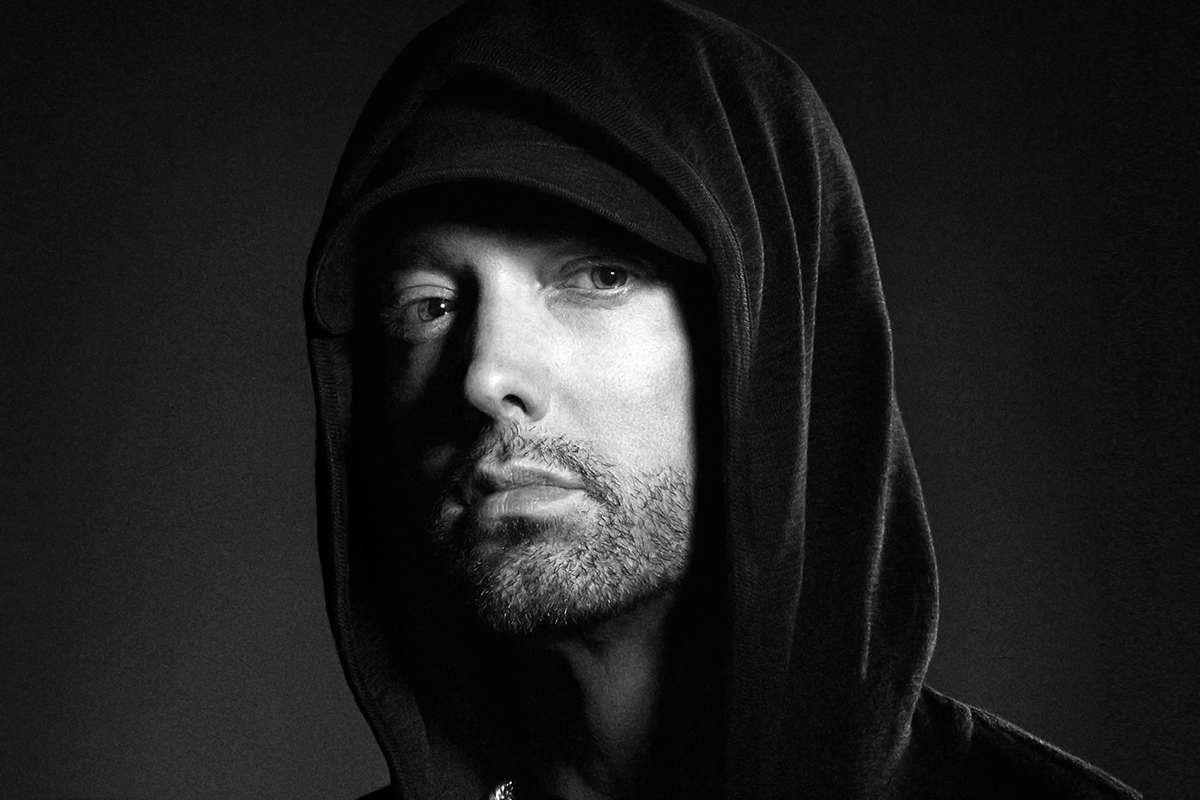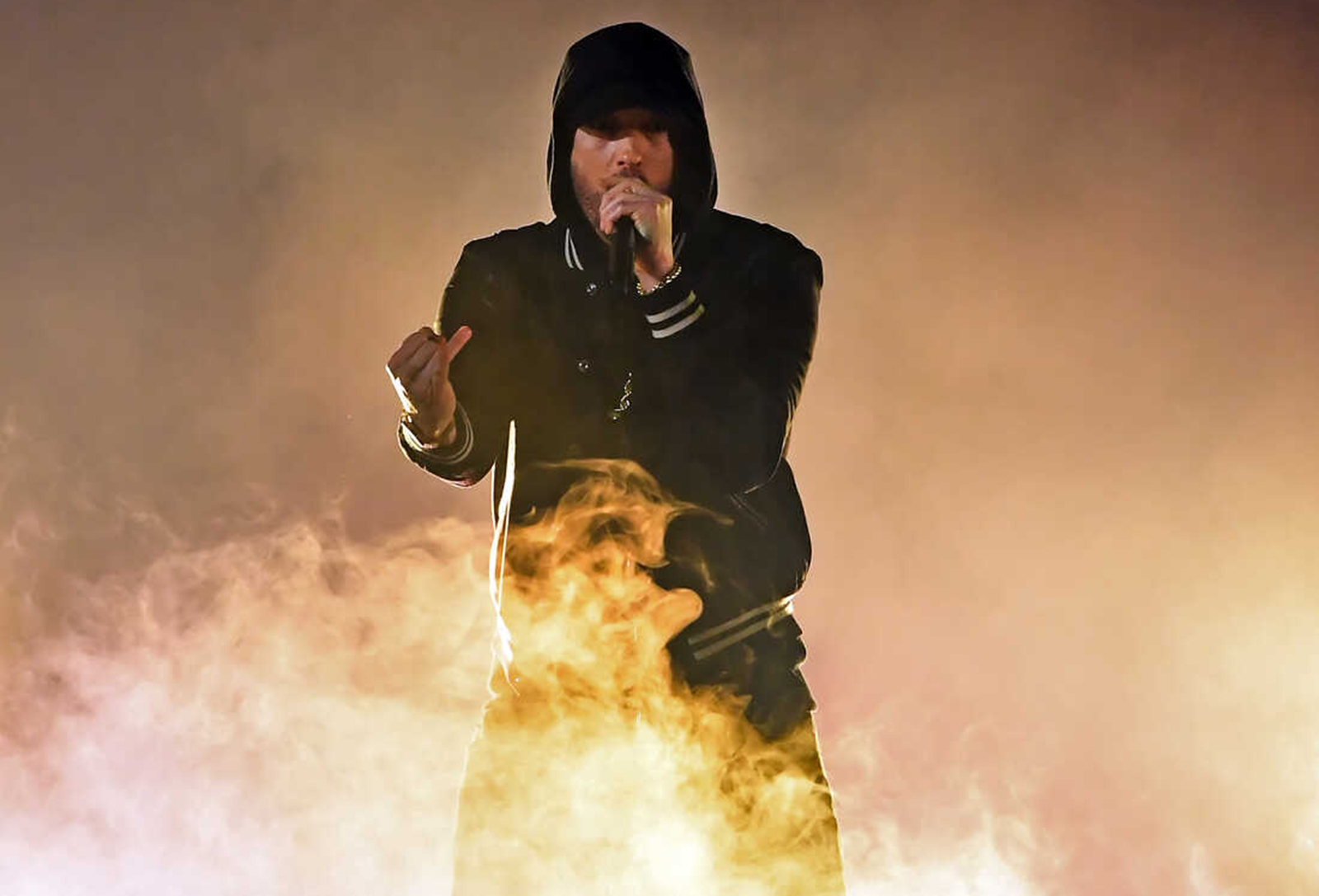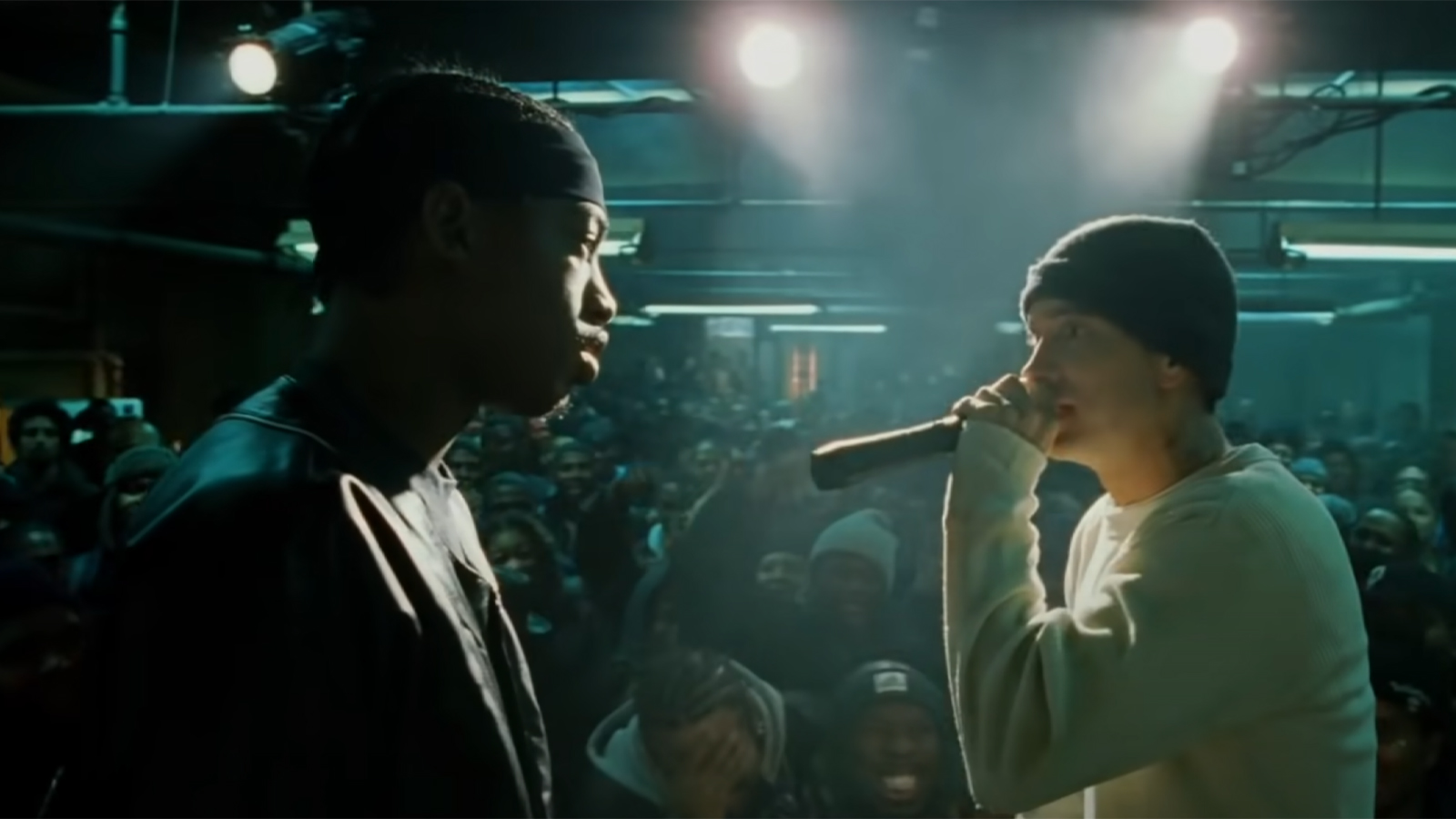Eminem: the True Superhero of Battle Rap
In many ways, Eminem’s rise to superstardom bears the hallmarks of a superhero narrative; he adopts an alter-ego as cover while he uses his unique power to fight his way out of adversity, becoming globally famous for his skillful technique before going on to use his fame and fortune to help those less fortunate than himself. This being Eminem, however, the story is a lot more complex than a simplistic rags to riches tale, or even 8 Mile, the movie dramatization of his early years struggling as a freestyle rapper in Detroit. While he’s undoubtedly a True Superhero, the truth is a hard thing to pin down where Marshall Mathers and his many alter-egos are concerned - this is, after all, a man who once employed a body double who was known professionally as Partial Mathers!

Would the real Marshall Mathers please stand up?
The life story of Eminem is one where the lines between truth and fiction are so blurred as to be almost invisible, and this lack of clarity stretches right back into his childhood. His narratives about his earliest years have even led to him being (unsuccessfully) sued for defamation by figures as unusual as his childhood bully and his own mother. One thing we do know is that he was born in 1972 in Missouri, and that his father, Marshall Mathers Snr., abandoned the family soon after his son was born, but most of Eminem’s family life from this point on is the subject of some debate.
Much of this is because of his mother, Debbie Nelson, who has vigorously contested nearly every aspect of Eminem’s description of his upbringing, going so far as to release a single about their relationship in 1999, and then writing a book, My Son Marshall, My Son Eminem, in which she gives her side of his story. There are few things that both mother and son agree on. They were certainly poor, although Debbie rejects the idea that they lived in run down trailers. The aforementioned childhood bully, DeAngelo Bailey, is another point of agreement; Debbie unsuccessfully tried to sue Marshall’s school after Bailey hospitalized him in one of many vicious attacks, something that Mathers went on to talk about in the song Brain Damage. Otherwise there is little in the way of commonly agreed fact to be found, and an awful lot of conjecture. One thing that has never been in doubt, though, is Marshall’s technical skill as a rapper.
"The brand new social experience where you activate your gaming skills as you train like a spy."
- TimeOut
Take on thrilling, high-energy espionage challenges across different game zones.

Enter Eminem
Rapping was Marshall’s outlet from an early age. Although he was rarely seen at his own high school he and his friend, MC Proof, would sneak into the neighboring school for rap battles in the corridors and lunch rooms, and it was here that he took on the moniker Eminem (derived from the M and M of his initials). Marshall eventually dropped out of school and took a job working in a restaurant, and at the weekends he and Proof would attend the weekly open-mic battles at the Hip-Hop Shop on Detroit’s West 7 Mile. It was unusual for a white kid to be competing at these events, and this undeniably made his task harder. “As soon as I grabbed the mike, I’d get booed,” Eminem recalled. “Once [they] heard me rhyme, though, they’d shut up”.

Meanwhile, he was preparing for the birth of his first daughter, Hailie-Jade, and recording his first album, Infinite, released on a local label in 1996. The album focused on the challenges of impending fatherhood, a subject that was important to Eminem but not so much to his audience, and the record bombed. To make matters worse, he was fired from his job days before his daughter’s first birthday. Eminem became increasingly angry, and this was reflected in his lyrics which now seethed with violent imagery. It was at this stage that he hit upon the idea for a new alter-ego, Slim Shady, who would allow him to enact his worst fantasies through his lyrics.
Slim Shady goes into battle
Eminem sold all of his possessions, recorded a demo entitled The Slim Shady EP, and took to the road to promote his new direction by attending the country’s top battle rap events. This began in Cincinatti with Scribble Jam, a festival of hip-hop culture with competitions for beatboxers, breakdancers, DJs, and of course emcees. The second leg took place in Los Angeles at the annual Rap Olympics, a dedicated event for rap battlers to prove their skills.
A large part of Eminem’s mythos is built around these events, and they are loosely dramatized in the semi-autobiographical 2002 movie 8 Mile, in which another of Eminem’s alter-egos, Jimmy “B-Rabbit” Smith, battles his way through a rival crew’s best wordsmiths at his local venue, The Shelter. The reality was much tougher, as Eminem faced hostile crowds who were heavily biased in favor of home-town favorites and established names on the rap scene. He acquitted himself brilliantly in both competitions, but won neither; Scribble Jam ended with an epic battle against world-renowned freestyler Juice, in a final that required six tie-breakers before the crown was eventually handed to Eminem’s opponent, who gallantly paid tribute to Eminem’s skills and tenacity while accepting the winner’s prize. The Rap Olympics were a more tetchy affair, with Eminem claiming that his opponent in the finals, Otherwize, walked off stage and left him to deliver his battle lines to the audience, an essentially impossible task. Otherwize has countered that there is no proof of this, as Eminem later bought all the footage of the event to prevent it being seen. As always, the truth is hard to separate from the fiction.

Although he didn’t win either of the events, Eminem managed a much more valuable victory when his demo tape found its way into the hands of Dr. Dre and Interscope Records. Dre immediately recognised the talent on display and began producing Eminem’s songs; at the start of 1999 the duo unleashed The Slim Shady LP on an unsuspecting world, and within months Eminem had become one of the most recognisable and successful recording artists on Earth.
The surprisingly quiet philanthropist
Eminem has now released his second compilation album, Curtain Call 2, an indicator of his prolonged success and relevancy in the rap game. While he’s never quite been able to recapture the enormous, planet-dominating success of his early years - in itself a near impossible task - the record is filled with remarkable highlights that would define the career of most other artists, with hits such as the dizzying lyrical tirade of Godzilla, or Rap God, both of which hold Guinness World Records (for fastest rap and most lyrics in a song, respectively). Meanwhile, he’s been quietly doing what he can to help the area he came from.
Many celebrities run foundations to manage their charitable work, but Eminem’s Marshall Mathers Foundation is unusual in that its owner rarely publicizes the work being carried out in his name. Eminem has always been an atypical rapper who is as likely to criticize as laud himself on his records, so perhaps it is unsurprising that he takes a modest approach to philanthropy; recipients of donations are often asked to not disclose the source of the funds. He is known to generously support multiple children’s services in Detroit, and has on occasion spoken up in order to secure additional funding from others, including a recent collaboration with Twitter CEO Jack Dorsey where the pair donated $1m to Covid-19 relief efforts in Detroit, with Dorsey putting up $750,000 of the total. It is perhaps surprising that the braggadocious young rapper should mature into the strong silent type, but this True Superhero’s life story has never been predictable.
SPYSCAPE+

Join now to get True Spies episodes early and ad-free every week, plus subscriber-only Debriefs and Q&As to bring you closer to your favorite spies and stories from the show. You’ll also get our exclusive series The Razumov Files and The Great James Bond Car Robbery!


Gadgets & Gifts
Explore a world of secrets together. Navigate through interactive exhibits and missions to discover your spy roles.
Your Spy Skills
We all have valuable spy skills - your mission is to discover yours. See if you have what it takes to be a secret agent, with our authentic spy skills evaluation* developed by a former Head of Training at British Intelligence. It's FREE so share & compare with friends now!
* Find more information about the scientific methods behind the evaluation here.


Stay Connected
Follow us for the latest
TIKTOK
INSTAGRAM
X
FACEBOOK
YOUTUBE